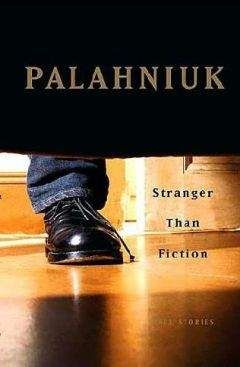There, deep in the woods of the Cascade Mountains, it's a vision… a fantasy.
A castle.
"There seems to be this underground of castle people," says Roger DeClements, who changed his name from the very German family name Grimes. He says, "There must be between twenty and thirty people building castles in the United States right now. A lot of them are people doing do-it-yourself work, so they're going kind of slow. They're starting out like I did with their designs. But there's also a couple very rich folks who just-boom-go and build the biggest castle they can imagine."
Here a man's home is his castle. And vice versa. And maybe this trend is no more than a bigger version of the basic nesting instinct. What SUVs are to regular cars, these castles are to regular houses. Solid. Safe. Secure.
Or maybe castle building is a rite of passage. A form of meditation or reflection. During the second half of his life, after his mother died, the psychologist and philosopher Carl Jung set to work building a stone castle. He built it in Bollingen, on the shore of Lake Zurich in Switzerland. He called it his "confession in stone."
Or maybe castle building is a reaction to the fast-paced, short-lived spirit of our times. For architects, the modern era ended at 3:32 P.M. on July 15, 1972, when the Pruitt-Igoe housing development was dynamited in St. Louis, Missouri. It had been a prize-winning example of clean-line, boxy, International-style architecture. What architects called "a machine for living." By 1972, it was a failure. The residents hated the place, and the city declared it uninhabitable.
That same year, the architect Robert Venturi declared that most people's idea of utopia was closer to Disneyland or Las Vegas than to a modern glass-box apartment.
So whether building a castle is a statement or a mission, a nesting instinct or a penis extension… what follow are the stories of three men who each left a career-a policeman, a building contractor, and a jet pilot-and set out to build a castle. Here are the mistakes they made. And what they've learned along the way.
Walking through his castle, high on its granite mountain above Sandpoint, Idaho, Roger DeClements is forty-seven years old but looks twenty-seven, with long thick hair that hangs past his shoulders. He's got wiry arms and legs and wears a white, long-sleeved T-shirt and blue jeans. Tennis shoes. His fingernails are a surprise, long and ridged, maybe from the years when he played bass with a rock band.
"I've always been building," Roger says. "I built my first house in 1975. Then we rented a place and it was right next to the railroad tracks and people would always come knocking on the door. Then we saw the movie The Beastmaster, and that gave me some ideas. I thought a castle would be good because it would be secure. Then I also noticed houses were depreciating with time where a castle would appreciate with time and not rot away."
By now Roger's built three castles-from his first, which took five weeks, to his latest, which is for sale at a million-dollar price. "Basically, I thought it would be fun," he says. "Fun to live in. Fun for people to look at. And then the fact that it would be there permanently, and you could pass it on for generations."
For Jerry Bjorklund, it was fun plus a little alcohol.
"I'm a pretty good sipper," he says. "I'm drinking some Black Velvet one night, and I called a friend on the city council, and I said, 'I'm going to build a castle. And he said, 'No, you can't do that. And I said, 'Yeah, I am. And the next morning I wake up and thought, 'Goddamn it. I told him I was going to build a castle, so here I go…"
But why a castle?
Jerry shrugs and says, "I don't know. Nordic heritage or whatever. I always had an interest in them. And it seemed like a good idea. Nobody else had one."
With a dark tan from winters spent fishing in Mazatlán, Jerry sits in an apartment that occupies one wing of his castle in the green hills above Camas, Washington. He's fifty-nine years old, a retired officer of the Camas Police Department. His face is square with a heavy cleft chin and a Viking's bushy mustache gone gray. His heavy eyebrows and full head of hair are gray. He wears a black pocket T-shirt and jeans. On his forearms, old tattoos have turned dark blue.
Jerry smokes Delicados cigarettes from Mexico. "I bring them back," he says. "I get them for seven dollars a carton." And he laughs a rumbling smoker's laugh.
His light-blue eyes almost match the pale-blue countertops of the apartment's kitchen. He drinks black coffee and wears a watch with a heavy silver wristband.
His ancestors were Norwegian, and he was born in North Dakota but raised here in Washington State. He retired in 1980 and built a small A-frame house. In 1983, he started his dream castle.
"I was going to build it out of rock," Jerry says. "We had a lot of rock here. And I struggled with that for probably six months. Rocks. Mortar. Washing rocks. Jesus."
Digging rock out of a pit on his five and one-half acres, Jerry built a twenty-two-foot tower. He says, "I got part of a tower built, and I could see that this was going to be a real labor-intensive adventure."
He laughs and says, "And I thought, 'There has got to be a better way.»
So he called his uncle, a master plasterer for fifty years, and asked about stucco. By July of 1983, he was building his castle out of wood and covering it with stucco.
He says, "It's a lot of two-by-sixes and a lot of half-inch plywood and a lot of staples."
The framing is two-by-sixes every two feet, covered with sheets of half-inch plywood. Stapled to the plywood is fifteen-pound tar paper, then stucco wire, which looks like chicken wire but is offset to allow the plaster to get behind the wire and harden around it. "They put the scratch coat on-that's the first coat," Jerry says. "Then you put the brown coat on. You smooth that out. Then I came back with an acoustic sprayer, like you'd use to spray acoustic ceilings, and we used white sand and Zonolite insulation. We'd mix this up in the acoustic machine and apply that with air pressure."
He says, "Just on the exterior alone, there's 380,000 pounds of sand and cement that I personally troweled on by hand. Then, I have a severe fear of heights, and it was a hell of a task when my last scaffold was up at thirty-two feet. Ah, Jesus, that was a terrible job, and it took me three days to do the parapet."
The castle consists of a three-story «keep» at the east end. Extending west from the keep, two wings enclose a central courtyard. The west end of the courtyard is enclosed by a garage. The keep is about 1,500 square feet, with 500 on each floor. Each of the wings is about 1,000 square feet with one wing finished as an apartment and the other as storage space. The garage is about 500 square feet.
Thinking about the construction, Jerry lights another cigarette. He laughs and says, "There are some fantastic stories."
To finish the forty-foot walls of the keep, Jerry built a tripod on the roof, using the tongues made to tow mobile homes-basically, ten-inch steel I beams with a length of well casing as a boom. He says, "This is really scary. I built a four-by-eight-foot basket. It was tall enough you could stand in it, and it was closed in with wire on three sides so you could actually work on the surface of the building. And I got this one-ton twelve-volt electric winch with five-sixteenths cable, and I got that mounted on the top of the cage with a remote control. Picture this: two guys get into this with a roll of wire or paper or whatever they're going to apply. We'd get in there and pull ourselves up to where we wanted to work. Well, I cut the well casing too short when I built it, so the basket wouldn't go outside enough to work on the parapet."
There, where the top of the tower flares out, just before the crenellated top, Jerry would have to trowel stucco while leaning backward over nothing but forty feet of air.
"You could work about halfway up the pitch-out, but it was a real son of a bitch after that point." He says, "We're up there dangling on this five-sixteenths-inch cable, and I had two people on the ground with ropes trying to steady this basket. The next day I went to town and bought a bunch of lumber, and we made scaffolding."
It took him four days just to assemble the scaffolding.
Getting the money together was even more tough.
"The goddamn bankers," Jerry says, "I talked to them one time while the castle was under construction, and they said there was no guarantee I was ever going to get it done-so I just said, 'To hell with it…»
He adds, "You won't get a loan from a bank. I've had appraisers come out three different times. What they ultimately conclude is that it is a 'nonconforming structure. " And he laughs. "That just fits it to a tee. Nonconforming… I love it.
"So I'd scratch up a few bucks, and do a little bit," he says. "Then I'd run out of money so I'd have to go back and do something else to make a few bucks. Then I'd come back and hit it again. You learn how to wire and plumb. You just learn as you go. I wouldn't say I'd never do it again. But thank God I'm getting too old."
The floors inside the keep are supported by eight-by-eight vertical posts that hold eight-by-twelve beams, rough cut by a friend from the hearts of trees.
"The first two floors weren't too bad," Jerry says. "The third floor was a real son of a bitch. The height. Evergreen Truss brought their truss truck out, and he had to put the extension on his boom, and he could still just barely get up there and set those beams for me. It was goddamn scary."
The first-floor kitchen includes a 1923 wood-burning kitchen stove and a half bath. The living room is on the second floor. The bedroom and a full bathroom are on the top floor. "When you go to the toilet here," Jerry says, "you're thirty feet off the deck."
Divorced now, at the time he built the keep Jerry Bjorklund was married. "You get women involved and it's 'I've got to have this. And I've got to have that. I've got to have a dining room set over here, and I've got to have a dishwasher. " Jerry says, "You start accommodating all that and it takes away from what I originally had in mind to do."
Once you're inside, the keep feels like a house, complete with wall-to-wall carpeting and crystal chandeliers. "It's like living any other place," he says. "You just forget about it."
When he started building, Jerry still didn't have anybody's official permission.
"At this point I was one-hundred-percent antigovernment," he says. "Of course I had no permits, no nothing, and my brother said, 'You'd better get some permission to do what you're doing. So I built a scale model and took it down to the building department and said, 'This is what I want to build. The old guy looked at it and said, 'How tall is it? And I said it's going to be forty feet. And he said, 'No, you can't do forty feet. You can only go thirty-six, by code."
The reason was, traditionally, the longest ladder a fire engine carries is forty feet. So Jerry filed for a variance, showing how his top floor would only be thirty-six feet high.
"They finally concluded that domes and spires and parapets were not included in the ordinance," he says, "therefore I could build it forty feet. That solved that problem."
Jerry got the scratch coat of plaster on the walls, then took off for a fishing trip to Canada. "We built it, then we built the plans." He paid a friend five hundred bucks and eventually got a permit that officially allowed the castle as a remodel of an existing agricultural building-an old barn long gone from the property.
Lighting another cigarette and laughing, Jerry says, "Basically I snookered them."
Since then, Jerry's castle has become a landmark.
"Airline pilots I talk to, for Alaska Airlines," Jerry says, "they make a turn when they come in from Seattle. They follow a route that takes them right over the top of the castle. They're announcing it to the passengers and all this shit. I talked to a couple of the pilots, and they said, 'We call that the Castle Turn into PDX.»
The castle's finest hour was in 1993, when a friend's wife sewed huge banners for the place. Four banners hung from the castle keep, and a half-dozen banners hung from the courtyard battlements and parapet towers. The keep's 250-pound door was painted with the castle's crest, a lion, similar to the crest of Norway. All of this, for a very special event.
"My daughter got married here ten years ago. We had a big wedding out here. There was, like, three hundred people." Jerry says, "I had this place dolled up like you wouldn't believe. Big banners and horseshit. Her husband dressed as Robin Hood, and she dressed as Maid Marion. And we had the Society for Creative Anachronism people out here for three days. I set up portable showers, and I had ten porta-potties. Jesus. Dance floors. The whole deal."
Since then the medieval groupies have talked about buying the castle as a permanent headquarters for Renaissance fair events. Another couple tried to buy the castle in order to lease it out for weddings; they'd planned to rent period costumes and provide catering, but Jerry backed away from the deal when it all seemed to be going too fast.
One irony is how a fortress built to exclude strangers now seems to attract a steady stream of the curious.
Jerry lights another Delicato cigarette and says, "We used to have a lot of trouble with people driving in all the time. Christ, one morning I was sitting in the castle having a cup of coffee, and I hear this noise, and the wife comes into the kitchen and says, 'What the hell is going on? She looked out the little window on the bottom floor, and there's a guy with a forty-foot motor home trying to turn around in the driveway. It took him about half an hour."
He says, "We put up NO TRESPASSING signs, but there must be a lot of illiterate people out there because they don't seem to know what it means."
An independent film company has used the castle as a backdrop for a film about the Middle Ages. Jerry's mother and brother live in the two closest houses. State Farm Insurance has asked about coming out to see just what it is they've insured, but no agent has ever made the trip.
"Rumor has it there's a basement dungeon under the tower," Jerry says, "and I just let people keep thinking that."
He adds, "I'm probably known as a crazy man in Camas, but I don't give a damn what they think."
His castle rises next to a small lake edged with cattails and lawn. This is the flooded quarry where Jerry dug rock for his original construction. That first labor-intensive tower was so solid it took two days to knock it down with a bulldozer. Now the stony ruins of it rise from the depths of the flooded quarry. Near the ruins, the castle's drawbridge spans the lake. The drawbridge used to lift and lower, until Jerry's brother, Ken, came along.
"There's an apparatus up in there with a motor and a series of couplers, and I had cables down," Jerry says. "And I had a guy rig me up a switch. My brother's the one who broke it. He came down here with a couple of his cronies-I was gone-and they were all drunk and messing with the goddamn bridge. They messed the switch up. They were always down here running it. Everybody who came here had to work the goddamn drawbridge."





